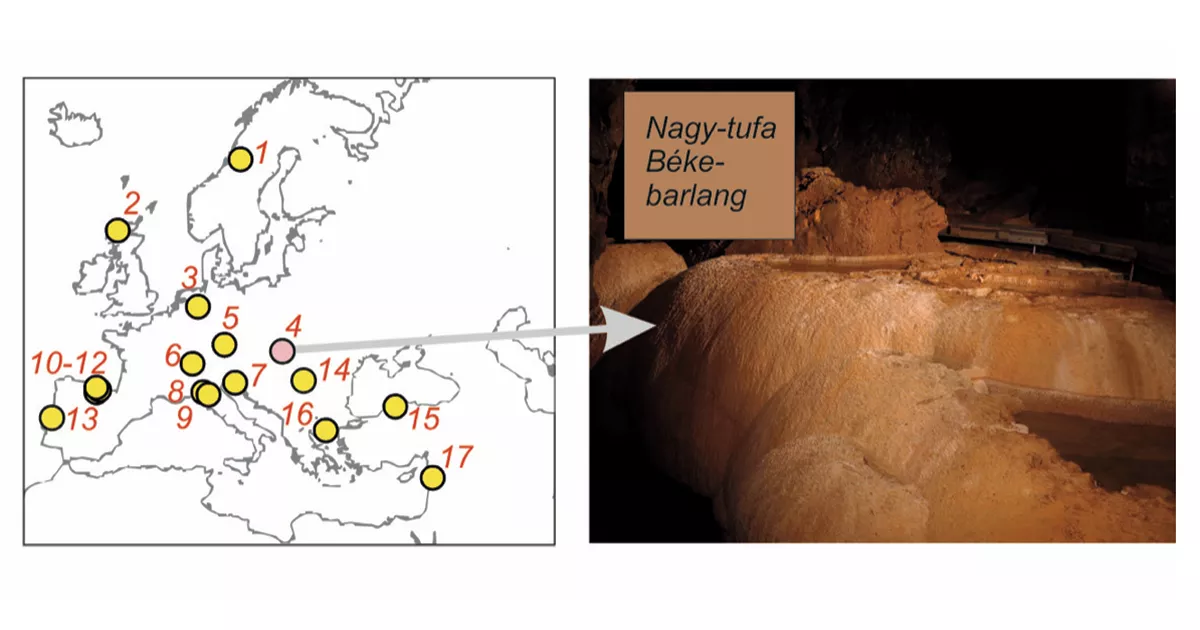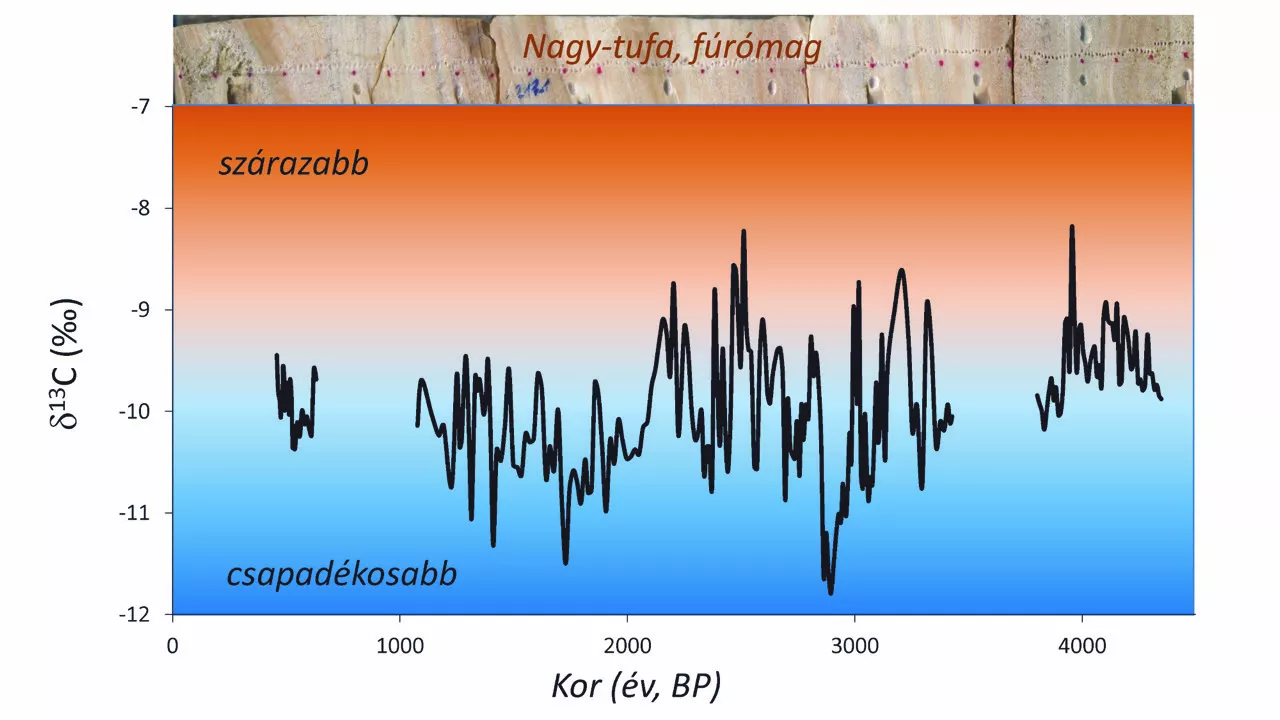In a recently published study, Attila Demény, a member of the Hungarian Academy of Sciences (MTA), and his colleagues compared 17 geochemical data sets (records) measured from speleothems (mainly carbonate deposits in caves) across Europe, from which previous studies have shown that they reflect the hydrological conditions prevailing at the time of their formation. The work was conducted within the framework of a project carried out with a partnership between the Institute of Geology and Geochemistry (FGI) of the ELKH Research Center for Astronomy and Earth Sciences and the researchers of Eötvös Loránd University. The project was funded by the Hungarian Academy of Sciences under the Excellence Cooperation Program. In addition, Professor Silvia Frisia from the University of Newcastle, Australia, co-authored the interpretation of the data as a guest-researcher invited by MTA.
The paleohydrological condition parameters inferred from the speleothems ranged from the amount of precipitation to seasonal distribution and changes in moisture source region, but with the common feature of reflecting hydrological conditions. In addition to stable carbon and oxygen isotope ratios (13C/12C and 18O/16O) in the speleothem carbonate, lamina (fine layers deposited in the stalagmites) data thickness and concentrations of precipitation sensitive elements (Mg, Sr) were also included.


Comparing the stalagmite data from the European and Mediterranean region with the core data from the Nagy Tufa formation in Béke Cave (NE Hungary), a systematic spatial pattern emerges that is very similar to the precipitation distribution patterns inferred from the European pollen database and climate models. These results provide multiple pieces of evidence that the stalagmite records, which are precisely dated and analyzed with at least a decade-long resolution, together indicate a change in the spatial and temporal distribution of precipitation across a centennial time scale.

The researchers conducted multivariate statistical analysis to identify the factors determining the change in stalagmite records. Principal component analysis (PCA) was used to determine principal component (PC) time series describing common changes in all records examined. Of these, the two PC time series that best explained the common variance of the records were correlated with Atlantic sea surface temperature (SST) databases as a potential independent explanatory factor, resulting in systematic patterns. While the SST data series from the area of warm currents showed positive correlations with the PC datasets, negative correlations appear in the area of cold north-south ocean currents. The components of different significance (PC1 and PC2) indicated a temporally varying degree of correlation, suggesting that the effect of North Atlantic currents changed significantly approximately 4,200 years ago. Research shows not only catastrophic ocean changes (such as the meltwater flux that occurred 8,200 years ago, which greatly reduced the strength of the warm current from the south), but also also long-term fluctuations that affected hydroclimatic conditions in the European and Mediterranean regions on a millennial scale. The presented correlations can help to understand the background of current climate change and precipitation distribution conditions that have a significant impact on society.

Source: https://doi.org/10.1016/j.quaint.2020.10.061